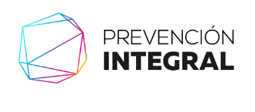Systematic OHS management in small firms
Systematic OHS management in small firms
[Versión en Español]
Small enterprises (SE) need a systematic OHS management (OHSM). They have many serious accidents and often problems in handling other OHS risks too. The mandatory requirements of OHSM – in all but a few of the OECD(*), and many other, countries – therefore also cover SEs. But to assess and prevent OHS risks does not have to be very complex. The elaborate OHS management systems, marketed by consultants, may instead do SEs more harm than good. For SEs without special complex risks, it is enough and achievable to systematically include OHS considerations in the normal management and to base this OHSM on a dialogue with the workers and some external advice.
Yet most SEs manage OHS much poorer than other enterprise issues. Few of them thus comply with the OHSM regulations. Some of the reasons for this are:
• All management is frail and OHSM is never the top priority.
• Through e.g. subcontracting and price-squeezes, the production in SEs is pushed into a social dumping of OHS and other working conditions.
• OHSM may be perceived as revealing OHS risks which are too costly to remedy.
• Management time and competence is unusually scarce in SEs, which leads to ignorance and disregard of OHS requirements, needs and possible solutions.
• The other local actor is also weak as workers are poorly organized and managers are reluctant to have an active dialogue with them about the OHSM.
•OHS authorities and other outside actors have too limited resources to survey and promote OHS and its management in the very large number of SEs.
On the other hand, some SEs do manage their OHS well. Many others also have resources to develop the required systematic but non-complex preventive OHSM:
• Both management and workers often have a good production competence.
• Workers' motivation and health is often important for an efficient production.
• The organisation is small, transparent and manageable.
• Many owners-managers share the risks and have a social relation with the workers.
• More autonomy to the workers is a potential both to improve OHSM and to enable management to focus on the strategic issues.
• Profits are often enough for some OHS investments and important improvement can usually be made at low costs.
There are also external resources to promote OHSM in SEs:
• Most small workplaces – also formally independent SEs – are part of large production networks. The larger organisations at the centre can – and sometimes do – support OHS and OHSM within the workplaces.
• Many special schemes translate the legal-medical OHS requirements to each SE's improvement needs, such as union based regional safety representatives, OHS insurers and OHS services. They can work more as help to self-help,, by promoting OHSM.
• Accountants, other consultants and business promotions program can also to some degree support a more systematic OHSM in 'their' SEs.
• OHS authorities can develop and pursue policies to support these actors – with regular access to the SEs – to promote OHSM within them.
Kaj Frik will be present on the Third International Conference on Occupational Risk Prevention, with the conference "Systematic Prevention Management in SMEs". For further information, please visit www.orp2004.com(*) OECD: Organisation for Economic Co-operation and Development


